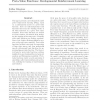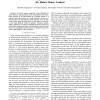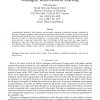77 search results - page 2 / 16 » Value Function Approximation in Reinforcement Learning Using... |
ICML
2005
IEEE
14 years 6 months ago
2005
IEEE
This paper presents a novel framework called proto-reinforcement learning (PRL), based on a mathematical model of a proto-value function: these are task-independent basis function...
IWANN
1999
Springer
13 years 9 months ago
1999
Springer
To avoid the curse of dimensionality, function approximators are used in reinforcement learning to learn value functions for individual states. In order to make better use of comp...
ICRA
2007
IEEE
13 years 11 months ago
2007
IEEE
— The least squares approach works efficiently in value function approximation, given appropriate basis functions. Because of its smoothness, the Gaussian kernel is a popular an...
IAT
2003
IEEE
13 years 10 months ago
2003
IEEE
A gradient-based method for both symmetric and asymmetric multiagent reinforcement learning is introduced in this paper. Symmetric multiagent reinforcement learning addresses the ...
ICML
2007
IEEE
14 years 6 months ago
2007
IEEE
Basis functions derived from an undirected graph connecting nearby samples from a Markov decision process (MDP) have proven useful for approximating value functions. The success o...



